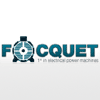- europages
- >
- COMPANIES - SUPPLIERS - SERVICE PROVIDERS
- >
- heat-conducting filler materials
Results for
Heat-conducting filler materials - Import export
Interactive map of the field
Most viewed companies in the sector
Filters
Results for
Heat-conducting filler materials - Import exportNumber of results
2 CompaniesCountries
Company type


